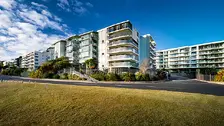Flipping vs Buy-and-Hold: Which Strategy Works Best in NZ?
 By
Trent Bradley
·
10 minute read
By
Trent Bradley
·
10 minute read

Property investment television shows make flipping look glamorous and profitable. Hosts transform tired properties into stunning homes within weeks, apparently making substantial profits in the process. Meanwhile, the conventional wisdom passed down through generations of New Zealand investors emphasizes patient buy-and-hold strategies as the path to wealth.
Key Takeaways
- Buy-and-hold is the superior long-term wealth-building strategy for most New Zealand investors due to tax-free capital gains beyond the bright-line period, lower time requirements, and powerful compounding over decades
- Flipping profits are taxed as income at marginal rates up to 39% under the bright-line rule, while buy-and-hold investors pay no capital gains tax on properties held beyond 10 years (5 years for new builds)
- Transaction costs of 5-7% of sale price (agent commissions, legal fees) and renovation cost overruns of 20-40% above initial estimates significantly erode flipping profits that television shows rarely acknowledge
- Flipping demands intensive time involvement functioning as a full-time business requiring construction skills, tradesperson networks, and substantial liquid capital for renovations and holding costs
- Buy-and-hold generates wealth through multiple simultaneous mechanisms—capital appreciation, mortgage principal reduction, rental income, tax advantages, and leverage amplifying gains on full property value with only deposit invested
- Successful flipping in New Zealand requires purchasing significantly below market value, completing cosmetic renovations on structurally sound properties, and executing in rising markets with reliable tradesperson networks and cash purchasing power
So which approach actually works better in New Zealand's current property market? At Luminate Financial Group, we work with investors pursuing both strategies, and we've seen successes and failures with each. The reality is more nuanced than television suggests, and the "better" strategy depends heavily on your skills, resources, market conditions, and financial goals.
Let's examine both approaches honestly, including the challenges that don't make it onto reality TV.
Understanding Property Flipping
Property flipping involves purchasing property, improving it quickly, and reselling for profit within a short timeframe – typically three to twelve months. The strategy aims to capture value through forced appreciation rather than waiting for natural market growth.
How Flipping Actually Works
Successful flipping requires identifying undervalued properties that other buyers overlook, purchasing below market value (often from motivated sellers), completing renovations quickly and cost-effectively, and reselling into a rising or stable market at current market value.
The profit comes from the gap between your total costs (purchase price plus renovation expenses plus holding costs plus transaction costs) and the sale price. This gap must be large enough to justify the effort, risk, and tax implications.
Unlike television portrayals, most successful flippers work systematically rather than dramatically. They develop property assessment systems, maintain tradesperson networks, understand council requirements thoroughly, and execute efficiently on repeatable improvement strategies.
The New Zealand Flipping Landscape
Flipping in New Zealand faces specific challenges that don't exist in many overseas markets. Our property market moves more slowly than markets like the United States where flipping is common. Transaction costs are higher, including real estate agent commissions typically around 3-4% plus GST, legal fees for both purchase and sale, and building inspection costs.
The bright-line property rule creates significant tax implications for flippers. Properties purchased and sold within ten years (five years for new builds) trigger income tax on gains. For flippers operating within months, profits are taxed as income, potentially at the highest marginal rate.
Building consent requirements, weathertightness concerns, and strict building codes mean renovations often take longer and cost more than in other countries. What seems like a simple renovation can uncover issues requiring professional engineers, council involvement, and substantial unexpected costs.
When Flipping Works
Flipping can be profitable in New Zealand under specific circumstances. Rising markets make flipping easier as natural appreciation supplements renovation gains. Properties purchased significantly below market value provide buffer against cost overruns and market changes.
Cosmetic renovations on structurally sound properties minimize risk and consent requirements. Having construction skills or reliable, affordable tradesperson networks reduces costs substantially. And flippers with cash or pre-approved finance can close quickly on distressed sales where motivated sellers accept lower prices.
The Real Challenges
Television glosses over flipping's difficulties. Finding genuinely undervalued properties is extremely challenging in New Zealand's competitive market. Most properties sell near market value, leaving little margin for renovation costs and profit.
Renovation costs consistently exceed initial estimates. Hidden issues emerge once work begins. Council requirements create delays. Tradespeople are busy and expensive. Materials cost more than anticipated. A $50,000 renovation budget often becomes $70,000 or more.
Holding costs accumulate daily – mortgage interest, rates, insurance, utilities. Every week of delay reduces profit. Market conditions can shift during renovations, particularly if projects extend beyond planned timeframes.
Transaction costs consume substantial profits. Between agent commissions, legal fees, and other costs, expect 5-7% of sale price going to transaction expenses. On a $600,000 sale, that's $30,000-$42,000 before any renovation costs or purchase price.
Perhaps most significantly, tax treatment punishes short-term property sales. Profits are taxed as income, potentially at 39% for high earners. A $100,000 gross profit might net only $61,000 after tax, dramatically affecting viability.
Understanding Buy-and-Hold Strategy
Buy-and-hold strategy involves purchasing property with intention to hold for many years or decades, collecting rental income while benefiting from long-term capital appreciation. This is New Zealand's traditional wealth-building approach through property.
How Buy-and-Hold Works
Buy-and-hold investors select properties in strong locations with solid long-term fundamentals – employment diversity, population growth, infrastructure development, supply constraints. They purchase at fair market value, rent to quality tenants, maintain properties adequately, and hold through market cycles.
Wealth accumulates through multiple mechanisms simultaneously. Capital appreciation builds equity over time. Mortgage principal reduction increases ownership stake. Rental income covers costs or provides cash flow. Tax advantages improve overall returns. Leverage amplifies gains on the total property value while you only invest the deposit.
This strategy requires patience and long-term perspective. Short-term market fluctuations become irrelevant when you're committed to decades of ownership. You're not trying to time markets perfectly – you're simply participating in long-term wealth creation through New Zealand property.
The New Zealand Buy-and-Hold Advantage
Buy-and-hold strategies align perfectly with New Zealand's property market characteristics and tax system. Our market rewards patient investors. Major centers have delivered strong long-term appreciation despite periodic flat periods. Limited land supply, population growth, and planning restrictions support ongoing value increases.
Tax treatment heavily favors long-term holding. Properties held beyond the bright-line period (ten years for most, five for new builds) can be sold without capital gains tax. This tax-free appreciation is extraordinarily valuable for long-term wealth building.
Rental market strength provides income stability. Most major centers maintain vacancy rates below 3%, ensuring consistent rental income for well-located, well-maintained properties. This income covers costs while you wait for appreciation.
Leverage works powerfully over long timeframes. A property purchased with 20% deposit and held for twenty years with 5% average annual appreciation grows substantially. You benefit from appreciation on the full property value while tenants effectively pay down the mortgage.
When Buy-and-Hold Excels
Buy-and-hold works exceptionally well for investors with stable income to service mortgages, long investment horizons of ten years or more, moderate risk tolerance and ability to weather market downturns, preference for passive investment without active involvement, and desire to build intergenerational wealth systematically.
The strategy thrives in markets with constrained supply, steady population growth, and economic diversity – characteristics describing most of New Zealand's main centers.
The Real Challenges
Buy-and-hold isn't without challenges. Properties can experience long periods of stagnant growth. Auckland's market, for example, saw minimal appreciation from 2017 to 2019 after strong preceding years. Patient investors weathered this successfully, but it tested resolve.
Negative cash flow is common, particularly in high-growth areas where purchase prices create high mortgages relative to achievable rents. Investors must subsidize properties from personal income, potentially for years before rents increase or mortgages reduce enough to create positive cash flow.
Property management demands time or money. Even with property managers, you're dealing with maintenance requests, tenant issues, periodic inspections, and unexpected problems. Pipes burst, hot water cylinders fail, tenants leave suddenly. These situations require attention and financial reserves.
Leverage cuts both ways. While amplifying gains in rising markets, it also magnifies losses if property values fall. Investors who purchased at market peaks and faced value declines experienced stress, particularly if they needed to sell during downturns.
Illiquidity means capital is locked up. Unlike shares, you can't sell 10% of a property to access funds. Accessing equity requires refinancing (with costs and approval processes) or selling entirely. This lack of liquidity limits flexibility.
Comparing the Strategies Directly
Time and Effort Requirements
Flipping demands intensive time involvement. You're actively searching for properties, analyzing deals, coordinating renovations, managing tradespeople, making countless decisions, and handling sales. Flipping is effectively a job or business, not passive investment.
Buy-and-hold requires significantly less time, particularly with property managers handling day-to-day operations. After initial purchase and tenant placement, ongoing involvement might be just a few hours monthly reviewing statements and addressing significant issues.
Capital Requirements
Flipping requires substantial liquid capital. You need deposits, renovation budgets, and reserves for holding costs and unexpected expenses. You can't leverage as heavily on renovation costs as you can on purchase prices. Many costs must be paid from cash or business lending rather than mortgage finance.
Buy-and-hold requires significant capital for deposits, but ongoing costs (mortgage principal and interest) are spread over decades. Once purchased, properties ideally cover ongoing costs through rental income, requiring minimal additional capital injection.
Risk Profiles
Flipping concentrates multiple risks in short timeframes. Renovation cost overruns, construction delays, market downturns during your holding period, failure to sell at expected prices, or unexpected building issues can eliminate profits entirely or create losses.
Buy-and-hold spreads risk over decades. Short-term market fluctuations matter less. You can wait out downturns. Maintenance costs spread over years become manageable. Long timeframes allow recovering from most issues.
However, buy-and-hold faces concentration risk from holding substantial wealth in few properties in one country. Diversification is challenging when individual properties require large capital commitments.
Tax Treatment
This is perhaps the most significant difference. Flipping profits are fully taxable as income at your marginal rate, potentially 39%. High profits push you into higher tax brackets, further increasing tax liability. There's no avoiding this tax burden when flipping properties.
Buy-and-hold investors who hold beyond bright-line periods pay no tax on capital gains, only on net rental income (which may be minimal after expense deductions). This tax advantage dramatically affects long-term wealth accumulation.
Return Potential
Flipping can generate quick substantial profits if executed well – potentially $50,000 to $100,000+ per project. However, after tax and accounting for all time invested, returns often appear less impressive. You're also constantly starting over, needing to find the next deal, with no compounding or passive income building.
Buy-and-hold generates slower wealth accumulation initially, but compounds powerfully over time. A property purchased for $500,000 appreciating at 5% annually reaches $1.3 million in twenty years. Combined with mortgage reduction and rental income, total wealth creation can be substantial, and it's largely tax-free.
Scalability
Flipping scalability is limited by your time, capital, and management capacity. Most successful flippers handle two to four projects annually at most. Scaling requires building teams, systems, and potentially operating as a business with employees.
Buy-and-hold scales more readily. Once you own multiple properties with good management systems, adding additional properties requires minimal additional time. Equity from existing properties can fund deposits on subsequent purchases. Successful long-term investors often build substantial portfolios through this approach.
Which Strategy Works Better in New Zealand?
The honest answer: for most New Zealand property investors, buy-and-hold is the superior long-term wealth-building strategy.
New Zealand's market characteristics – transaction costs, tax treatment, slower-moving markets, building regulations, and strong long-term appreciation – all favor patient buy-and-hold approaches over flipping. The investors we see building the most sustainable, substantial wealth almost universally employ long-term holding strategies.
However, flipping can work for specific investors under specific circumstances. Those with construction backgrounds who can personally complete renovations, people who genuinely enjoy project management and active investment, investors treating flipping as a business rather than passive investment, and those who can consistently identify genuinely undervalued properties may succeed with flipping.
But success requires acknowledging that flipping in New Zealand is a business requiring full-time commitment, substantial capital, professional skills, and systematic execution. It's not a get-rich-quick scheme, and television portrayals significantly understate the challenges.
A Hybrid Approach
Some successful investors combine both strategies strategically. They maintain a core buy-and-hold portfolio for long-term wealth accumulation while occasionally flipping properties to generate cash for additional deposits, accelerate debt reduction on keepers, or provide income.
This hybrid approach captures buy-and-hold's long-term tax-free appreciation while using flipping profits to accelerate portfolio growth. However, it requires skills and capital for both strategies and careful management to avoid overextension.
The Luminate Financial Group Perspective
At Luminate Financial Group, we typically guide clients toward buy-and-hold strategies as their primary wealth-building approach through property. The tax advantages, lower time requirements, reduced risk profile, and powerful long-term compounding align better with most people's circumstances and goals.
Flipping might complement your strategy if you have relevant skills and treat it as business income rather than investment returns, but it shouldn't be your primary wealth-building approach unless you're genuinely passionate about property renovation and actively involved as a business.
The most important principle: choose strategies matching your strengths, resources, and goals rather than chasing what looks exciting on television or worked for someone else. Property wealth builds through consistency, patience, and strategic execution – not through dramatic renovations or quick flips.
Buy-and-hold has created more property millionaires in New Zealand than any other strategy. It's not glamorous. It doesn't make good television. But it works reliably for investors who execute well and maintain commitment through market cycles.
That's the strategy we recommend for most people, most of the time, in most New Zealand markets. Sometimes the traditional wisdom persists because it actually works.
Frequently Asked Questions
Can I really make $100,000 profit flipping a property like on TV shows?
Gross profits of $50,000-$100,000 are theoretically possible but rare in New Zealand's competitive market, and actual after-tax returns disappoint dramatically. A $100,000 gross profit faces approximately $30,000-$42,000 in transaction costs (agent commissions 3-4% plus legal fees), then income tax at your marginal rate potentially 39%, leaving approximately $36,000-$43,000 net profit. Television shows rarely show holding costs, unexpected expenses, or time invested. Most New Zealand flippers working full-time on multiple projects annually generate income comparable to employment rather than extraordinary returns, while assuming significantly more risk and stress.
What's the minimum holding period to avoid paying tax on property gains?
Properties must be held beyond the bright-line period to avoid capital gains taxation—currently 10 years for most residential properties purchased after March 27, 2021, or 5 years for new builds and properties purchased before that date. Properties sold within these periods trigger income tax on gains regardless of intent. Main homes remain exempt from bright-line rules. This tax treatment heavily favors buy-and-hold strategies over flipping, as a $200,000 gain held 11 years is completely tax-free, while the same gain from flipping would incur $60,000-$78,000 in tax at higher marginal rates.
How much should I budget for renovation costs when flipping?
Budget conservatively with 20-30% contingency above initial estimates, as hidden issues consistently emerge once renovation work begins. A cosmetic renovation including kitchen, bathroom, painting, and flooring typically costs $40,000-$80,000 for an average house, but structural discoveries, weathertightness issues, or code compliance requirements can double costs. Always get multiple quotes, include contingencies for council consent delays and unexpected building problems, and maintain cash reserves for overruns. Renovation cost blowouts represent the primary reason flipping projects fail financially—what appears profitable at $50,000 renovation cost becomes a loss at $75,000 actual cost.
Is negative cash flow normal with buy-and-hold investing?
Yes, negative cash flow of $50-$200 weekly is common for buy-and-hold properties in New Zealand's high-growth areas where purchase prices create high mortgages relative to achievable rents (typically 3-4% gross yields). Investors subsidize properties from personal income expecting future rent increases, mortgage reduction, and capital appreciation to eventually create positive cash flow and substantial equity gains. This requires stable employment income and financial buffers to sustain through potentially 5-10 years of subsidization. Regional properties offering 5-7% yields may achieve positive cash flow immediately but typically deliver lower capital growth, creating a trade-off between immediate cash flow and long-term appreciation.
Which strategy works better for someone with construction experience?
Construction skills significantly improve flipping viability by reducing renovation costs (potentially 40-60% savings completing work yourself versus hiring tradespeople) and enabling accurate cost estimation that prevents budget overruns. However, even with construction skills, buy-and-hold likely delivers superior long-term wealth due to tax-free appreciation and compounding effects. Consider a hybrid approach—maintain core buy-and-hold portfolio for tax-free long-term gains while occasionally flipping properties to generate cash for additional deposits or accelerate debt reduction on keepers. This captures buy-and-hold's tax advantages while using your construction skills to accelerate portfolio growth through strategic flipping projects.
How do I know if a property is genuinely undervalued for flipping?
Genuine undervaluation in New Zealand's competitive market is rare and typically results from motivated sellers (divorce, relocation, financial distress), poor presentation disguising good bones, or cosmetic issues deterring emotional buyers. Research comparable sales thoroughly—properties selling 15-20% below similar properties in similar condition may indicate opportunity. However, verify why prices are lower through building inspections, title searches, and location analysis before assuming undervaluation. Most apparently cheap properties have legitimate reasons for lower prices including structural issues, weathertightness problems, difficult locations, or title complications that eliminate flipping profitability once properly addressed.

Trent Bradley
Trent Bradley is a New Zealand financial advisor specializing in property-backed finance and investment consulting. With over 26 years of experience running his mortgage broking business, he has helped wholesale investors access high-yield property-backed loan opportunities. For the past 12 years, Trent has led Luminate Finance, a New Zealand finance company dedicated to connecting investors with secure property investment solutions.








































